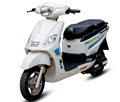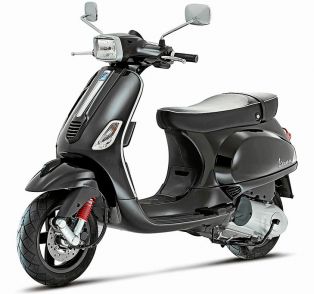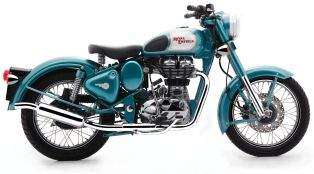Spring loaded hydraulic suspensions are the conventional dampers used in two wheelers since ages, very limited change has been seen in the regular spring loaded shock absorbers. Apart from its Monoshock avatar the dual shock absorbers are seen quite conventionally as rear shock-ups in motorcycles.
Manufactures have tried to improve the performance of the suspensions through introduction of dual springs (SNS) but the real improvement came when the ‘Piggyback’ Canister Gas filled shock absorbers came into existence. The difference between regular spring loaded suspensions and Nitrox charged suspensions is not merely the looks but it is the functionality that differentiates between the two major types of dampers.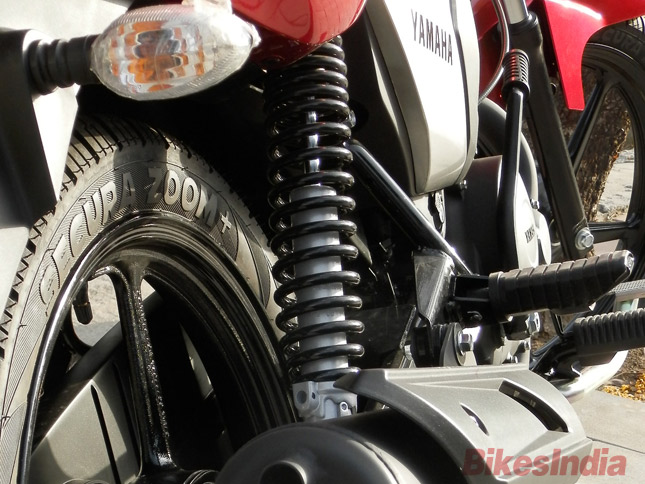 Spring Loaded Suspensions:
Spring Loaded Suspensions:
The conventional spring loaded hydraulic type suspensions work on the principle of Hydraulics. In simpler terms the functioning of the damper is based on ‘fluid’ and in the case of suspension it is the ‘Damping Oil’ that is present inside the suspension. The suspension is consists of the outer most spring, which is responsible for taking back the entire suspension unit to its original shape after it gets compressed due to uneven surface.
The next part comes is the body of the damper which is a tube like structure filled with Damping oil. Inside the tube there is the piston for up and down movement sealed by an air tight oil seal. It is this collective damping unit which is responsible for taking the toll of the external jerks.
READ ALSO: Different Types Of Dual Shock Absorbers Explained
There are valves fitted to the piston which move up and down alongside the piston, these valves contain holes and therefore when the piston moves inside the tube filled with damping oil, the oil gets partially compressed and partially it passes out through the holes present at the valves. This controlled movement of piston ensures efficient damping effect which later came back to its original position with the help of external spring fitted to the damping unit. This is how a typical spring loaded hydraulic damper works, but there is one drawback associated with the Damping oil used in the suspension.
The damping oil when blended inside the damping unit after extensive use it starts turning into foam, or in other words formation of bubbles get started. This process is called as “Cavitation” and can be understood by shaking oil in a bottle or container. Actually, there are about 10% of gas molecules present in the oil which get loosen their bond with the oil molecules when shaken or blended. These gas molecules come out in the form of bubbles and collectively they take form of foam in later stages.
RELATED ARTICLE: Gas Filled Or Nitrox Charged Shock Absorbers Explained
When the foaming of the damping oil takes place the efficiency of the overall damping unit gets deteriorated, this can be felt while riding your motorcycle nonstop for a fairly long time. However, the Cavitation is temporary and it gets settled once you bring the vehicle on rest. But the effect of the foaming of oil is inevitable in the conventional spring loaded hydraulic suspensions.
Now, to prevent the drawback of Cavitation, a solution comes in the form of “Gas Filled” canisters in the suspensions.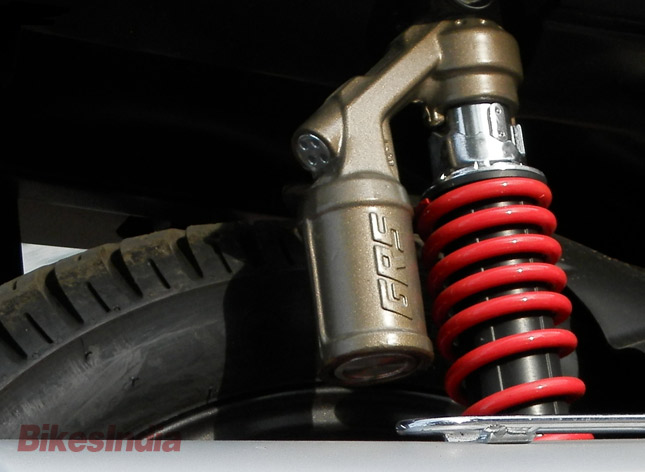 Gas Charged or Nitrox Filled Suspensions:
Gas Charged or Nitrox Filled Suspensions:
A small piggyback canister is attached with the regular spring loaded suspension, this can is filled with pressurized gas and normally Nitrogen is used and therefore the name “Nitrox” comes into existence. The purpose of the pressurized gas is to keep the damping oil also pressurized so that the gas molecules in the oil remain strongly bonded with the oil molecules even in the most stressful working conditions.
The inclusion of the pressurized gas to the damping unit not only helps the molecular structure of the oil remain in place but also the canister plays a role of a reservoir for the oil improving the overall performance of the suspension. Rest of the functioning of the suspension remains exactly same as that of a conventional spring loaded damper. In fact the Gas Filled damper is an improved/improvised form of the regular springer suspensions be it a Monoshock version or a set of dual suspensions used at the rear of your motorbike.
By: Farhan Kashif
Manufactures have tried to improve the performance of the suspensions through introduction of dual springs (SNS) but the real improvement came when the ‘Piggyback’ Canister Gas filled shock absorbers came into existence. The difference between regular spring loaded suspensions and Nitrox charged suspensions is not merely the looks but it is the functionality that differentiates between the two major types of dampers.
 Spring Loaded Suspensions:
Spring Loaded Suspensions:The conventional spring loaded hydraulic type suspensions work on the principle of Hydraulics. In simpler terms the functioning of the damper is based on ‘fluid’ and in the case of suspension it is the ‘Damping Oil’ that is present inside the suspension. The suspension is consists of the outer most spring, which is responsible for taking back the entire suspension unit to its original shape after it gets compressed due to uneven surface.
The next part comes is the body of the damper which is a tube like structure filled with Damping oil. Inside the tube there is the piston for up and down movement sealed by an air tight oil seal. It is this collective damping unit which is responsible for taking the toll of the external jerks.
READ ALSO: Different Types Of Dual Shock Absorbers Explained
There are valves fitted to the piston which move up and down alongside the piston, these valves contain holes and therefore when the piston moves inside the tube filled with damping oil, the oil gets partially compressed and partially it passes out through the holes present at the valves. This controlled movement of piston ensures efficient damping effect which later came back to its original position with the help of external spring fitted to the damping unit. This is how a typical spring loaded hydraulic damper works, but there is one drawback associated with the Damping oil used in the suspension.
The damping oil when blended inside the damping unit after extensive use it starts turning into foam, or in other words formation of bubbles get started. This process is called as “Cavitation” and can be understood by shaking oil in a bottle or container. Actually, there are about 10% of gas molecules present in the oil which get loosen their bond with the oil molecules when shaken or blended. These gas molecules come out in the form of bubbles and collectively they take form of foam in later stages.
RELATED ARTICLE: Gas Filled Or Nitrox Charged Shock Absorbers Explained
When the foaming of the damping oil takes place the efficiency of the overall damping unit gets deteriorated, this can be felt while riding your motorcycle nonstop for a fairly long time. However, the Cavitation is temporary and it gets settled once you bring the vehicle on rest. But the effect of the foaming of oil is inevitable in the conventional spring loaded hydraulic suspensions.
Now, to prevent the drawback of Cavitation, a solution comes in the form of “Gas Filled” canisters in the suspensions.
 Gas Charged or Nitrox Filled Suspensions:
Gas Charged or Nitrox Filled Suspensions:A small piggyback canister is attached with the regular spring loaded suspension, this can is filled with pressurized gas and normally Nitrogen is used and therefore the name “Nitrox” comes into existence. The purpose of the pressurized gas is to keep the damping oil also pressurized so that the gas molecules in the oil remain strongly bonded with the oil molecules even in the most stressful working conditions.
The inclusion of the pressurized gas to the damping unit not only helps the molecular structure of the oil remain in place but also the canister plays a role of a reservoir for the oil improving the overall performance of the suspension. Rest of the functioning of the suspension remains exactly same as that of a conventional spring loaded damper. In fact the Gas Filled damper is an improved/improvised form of the regular springer suspensions be it a Monoshock version or a set of dual suspensions used at the rear of your motorbike.
By: Farhan Kashif





